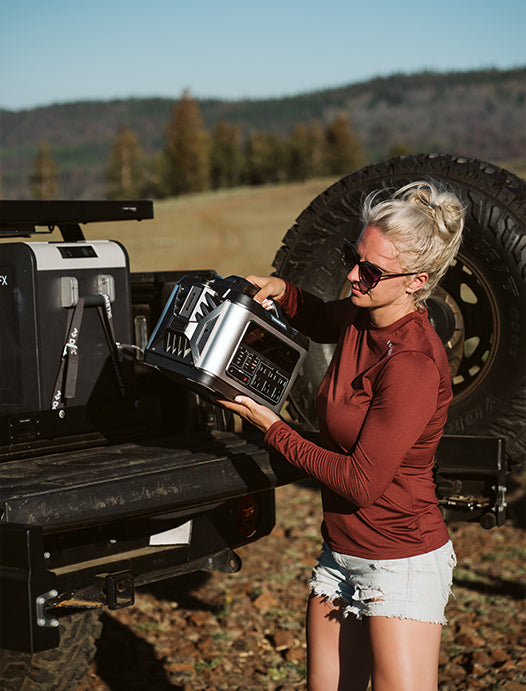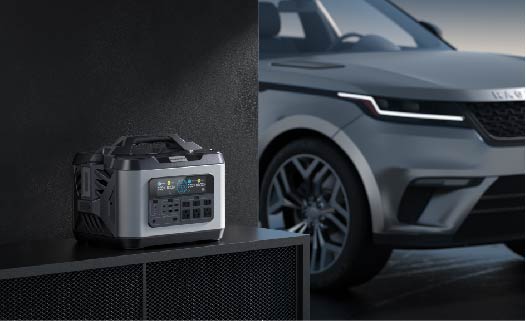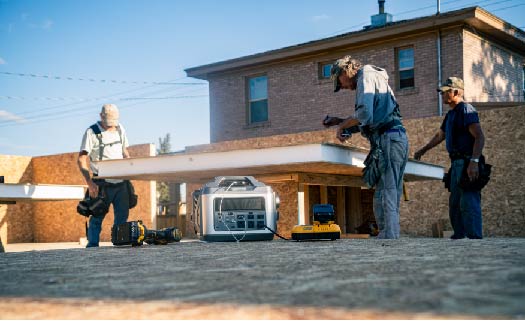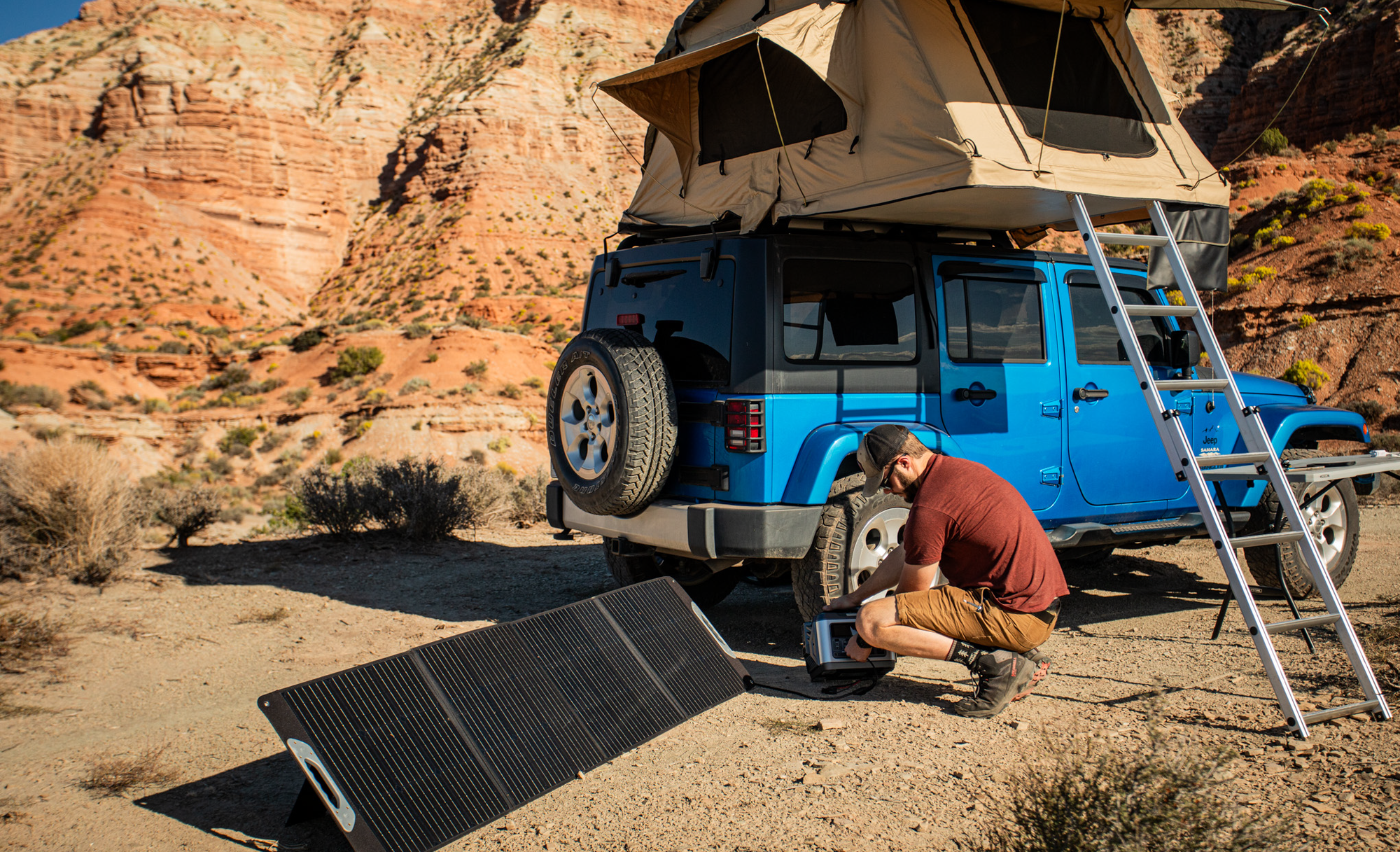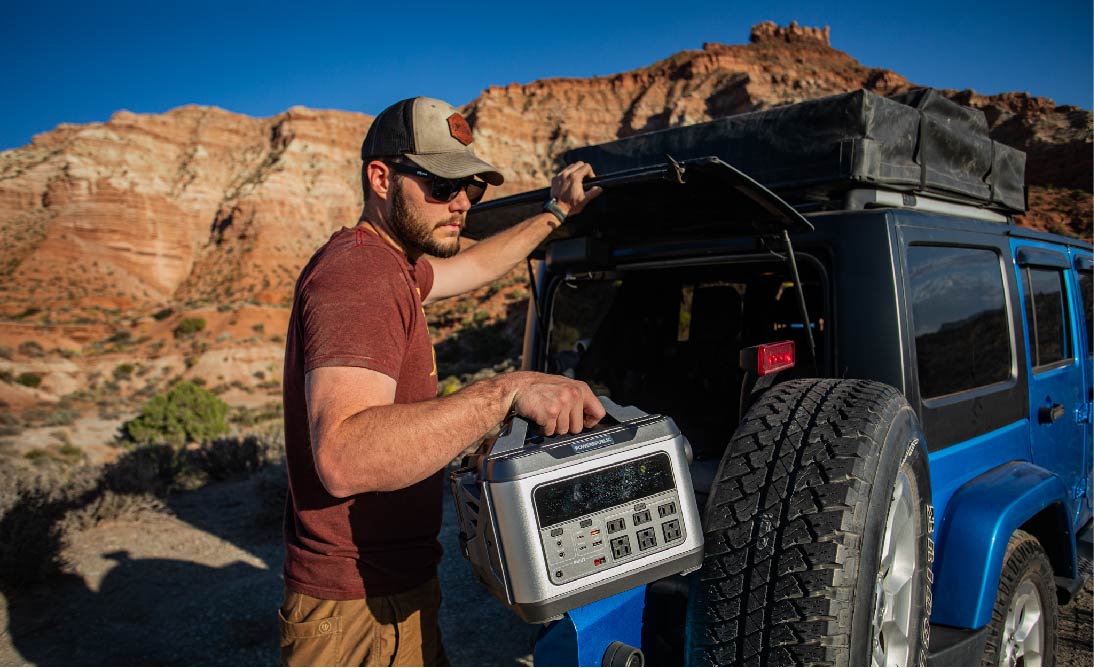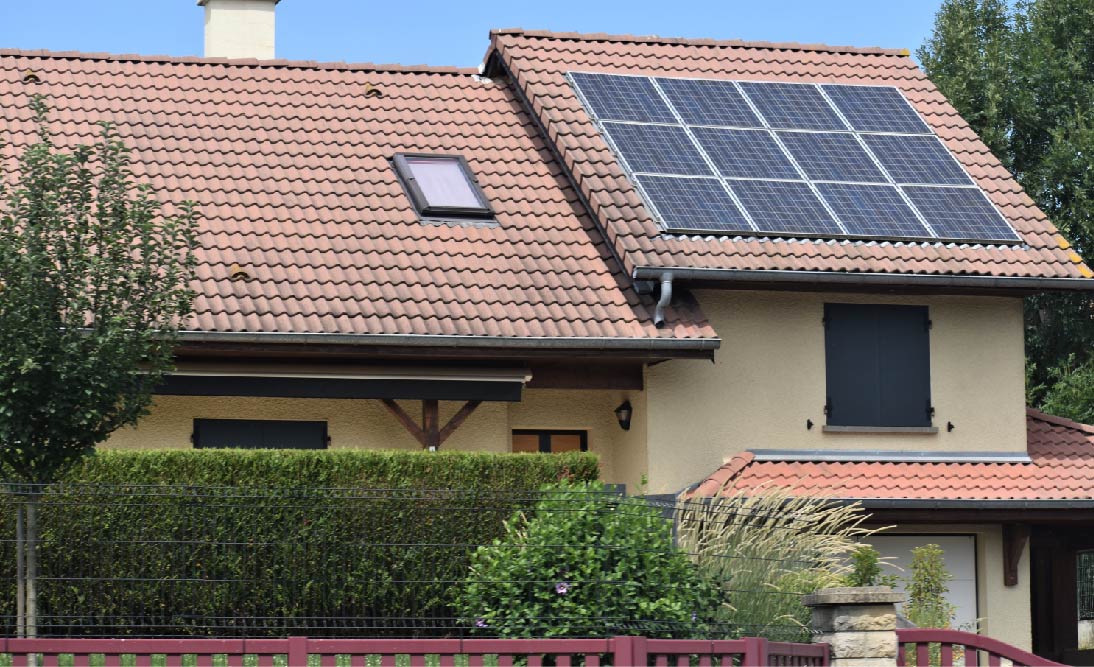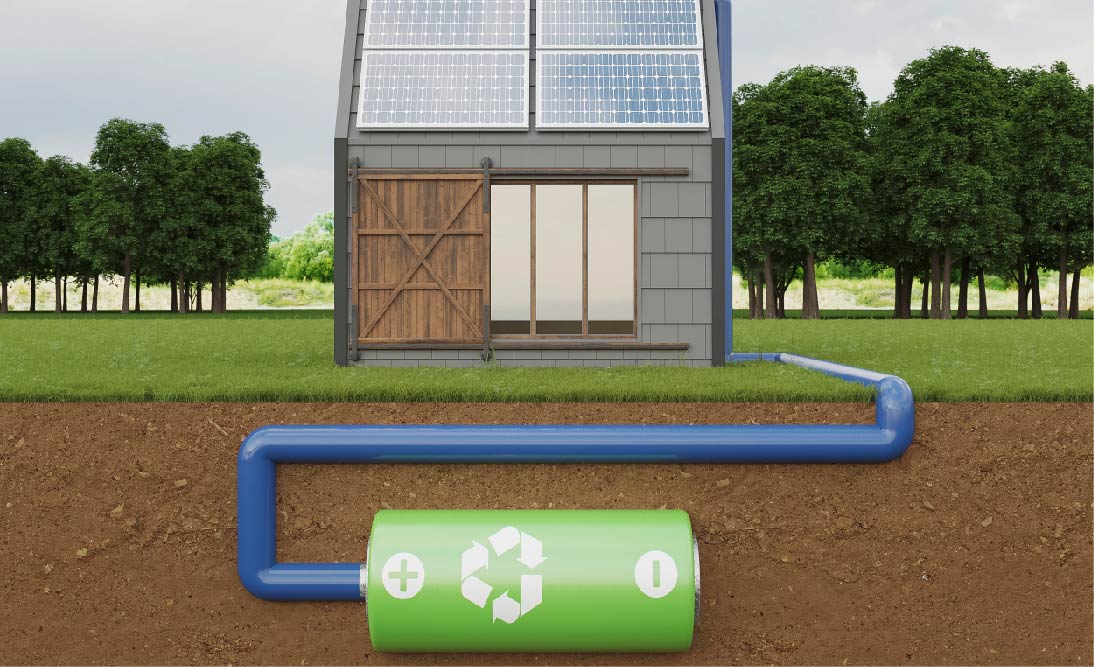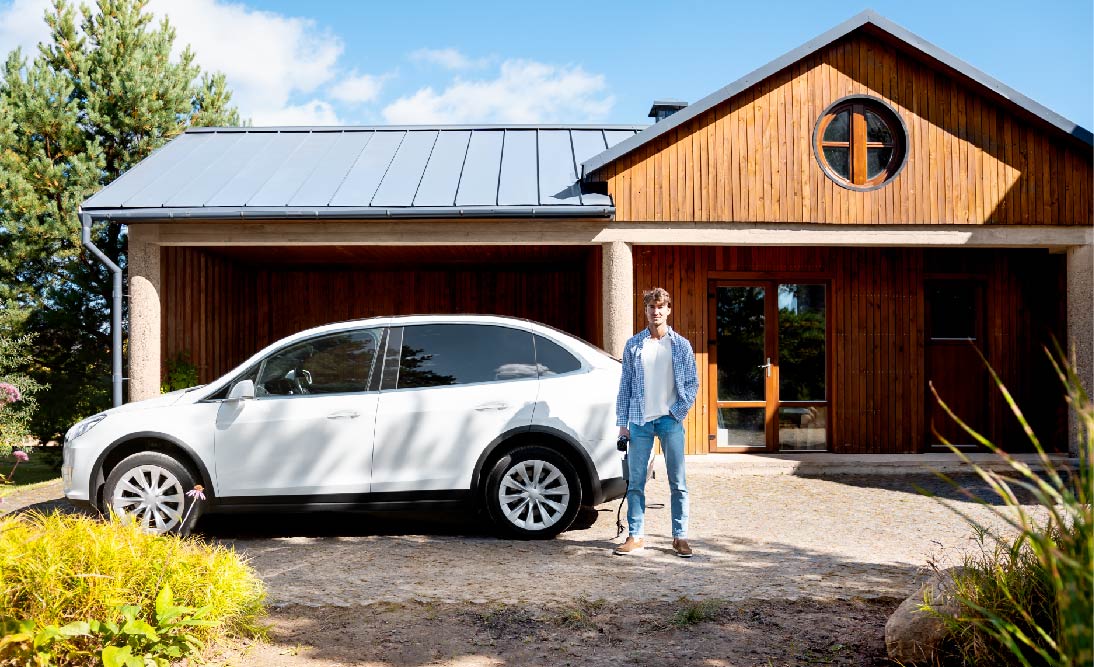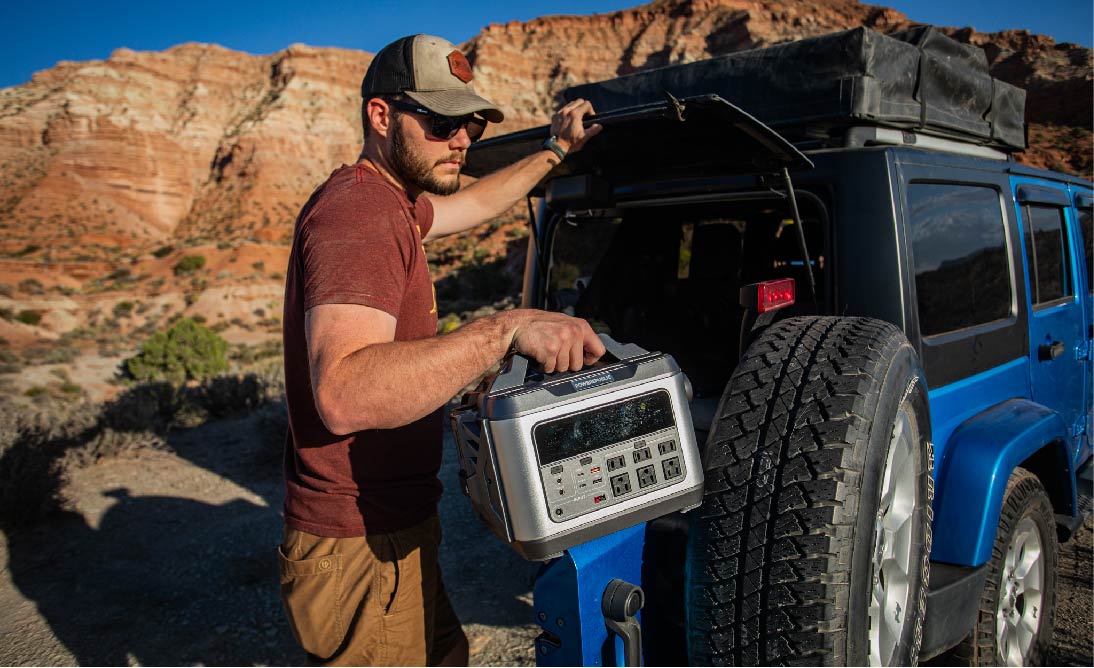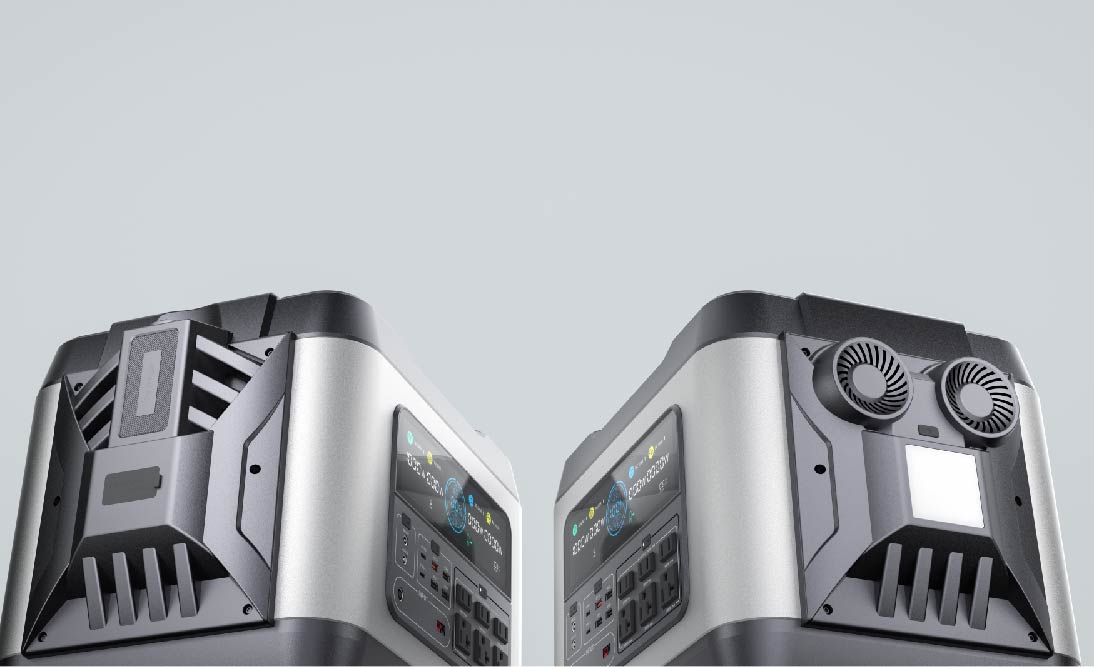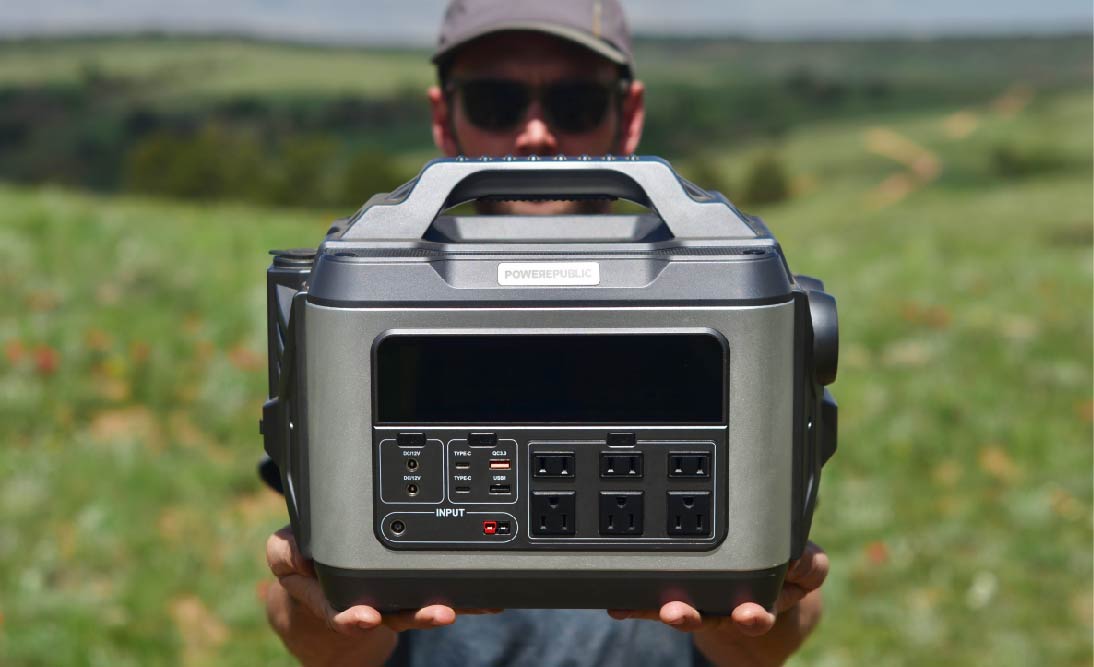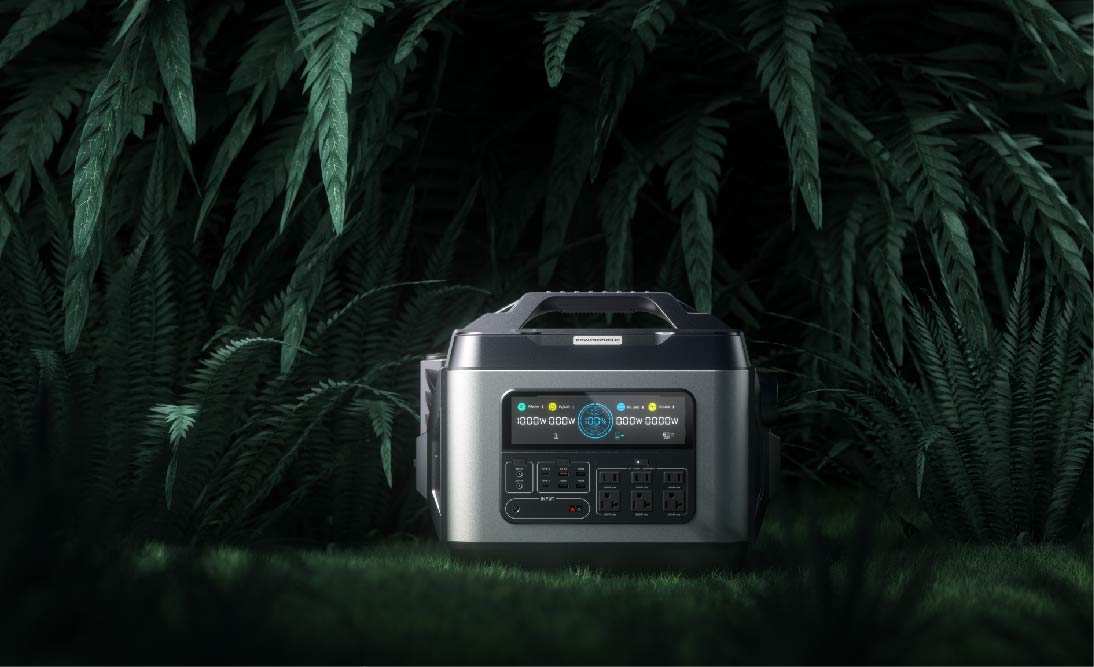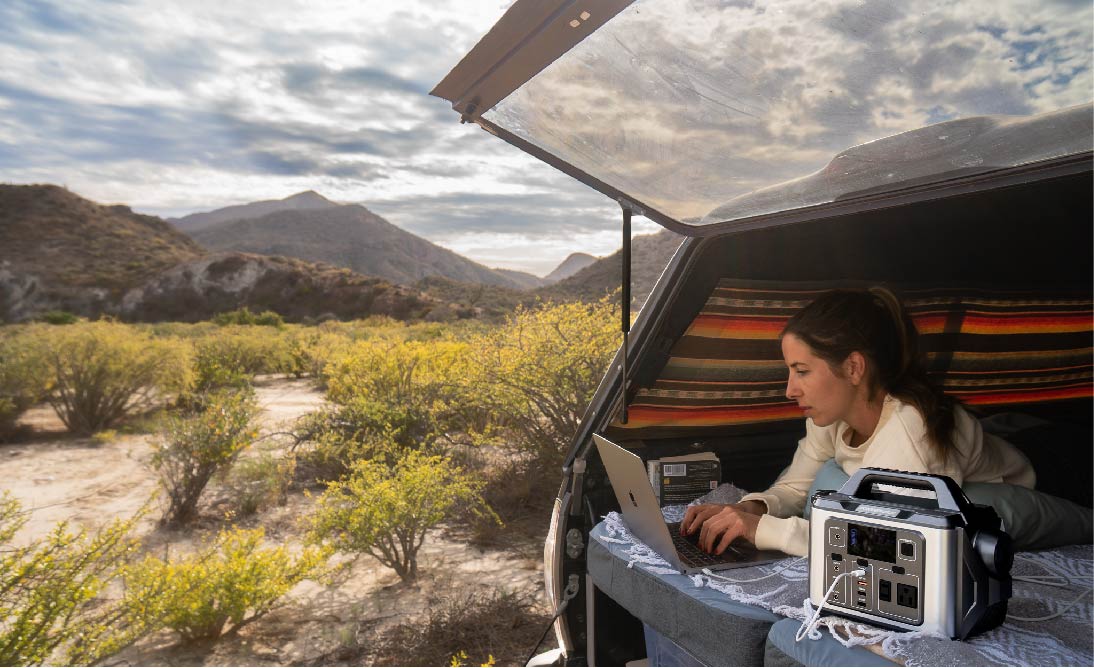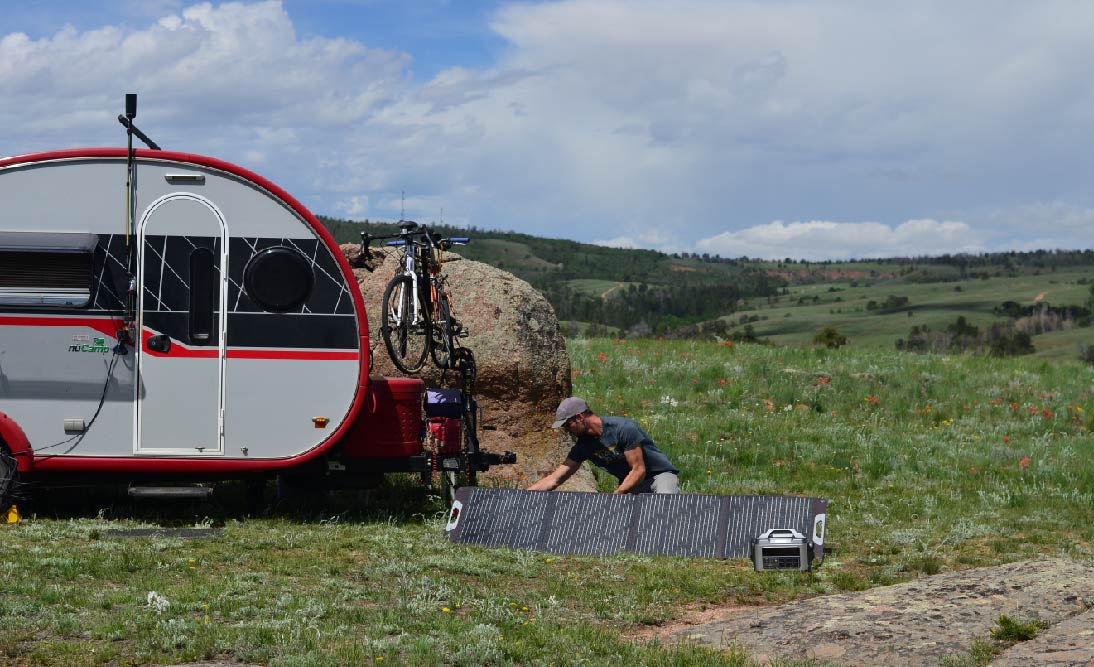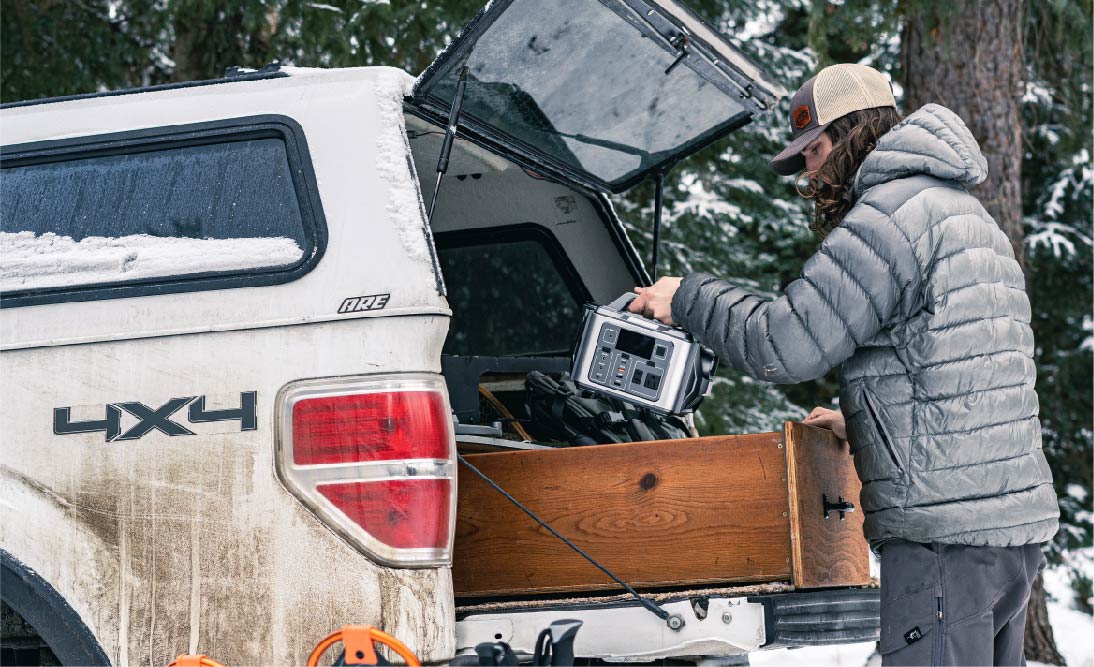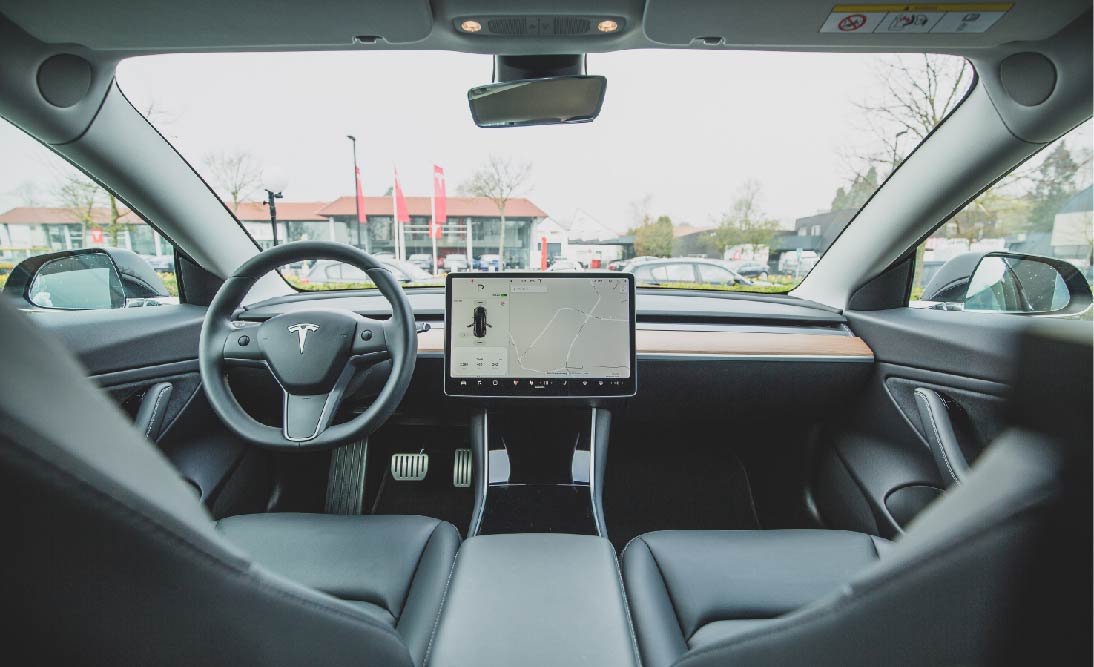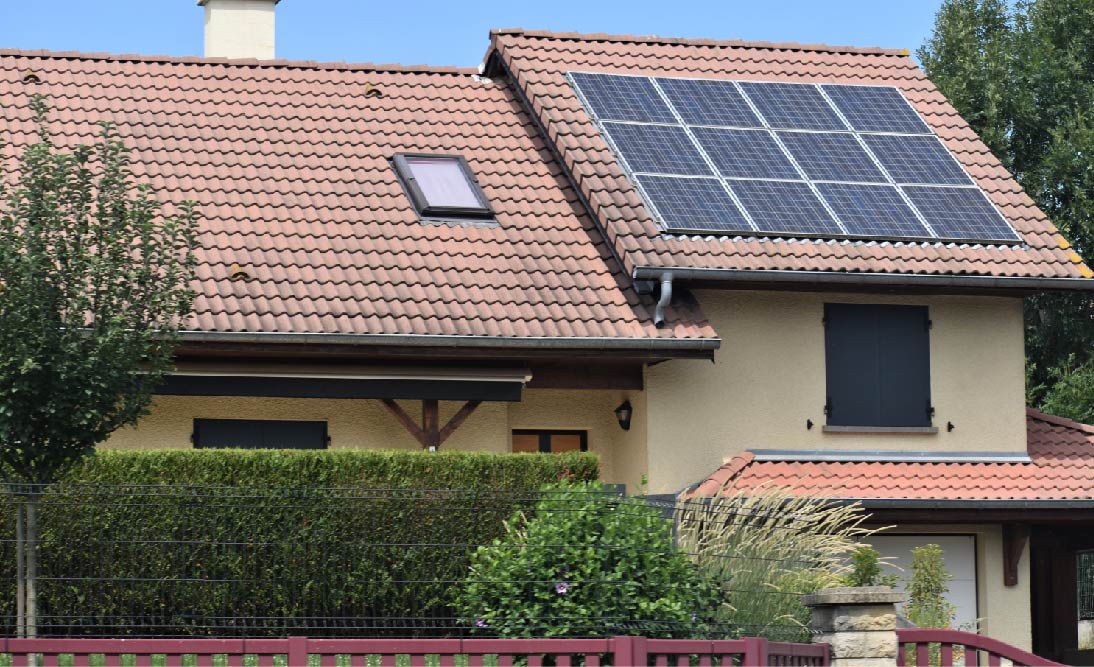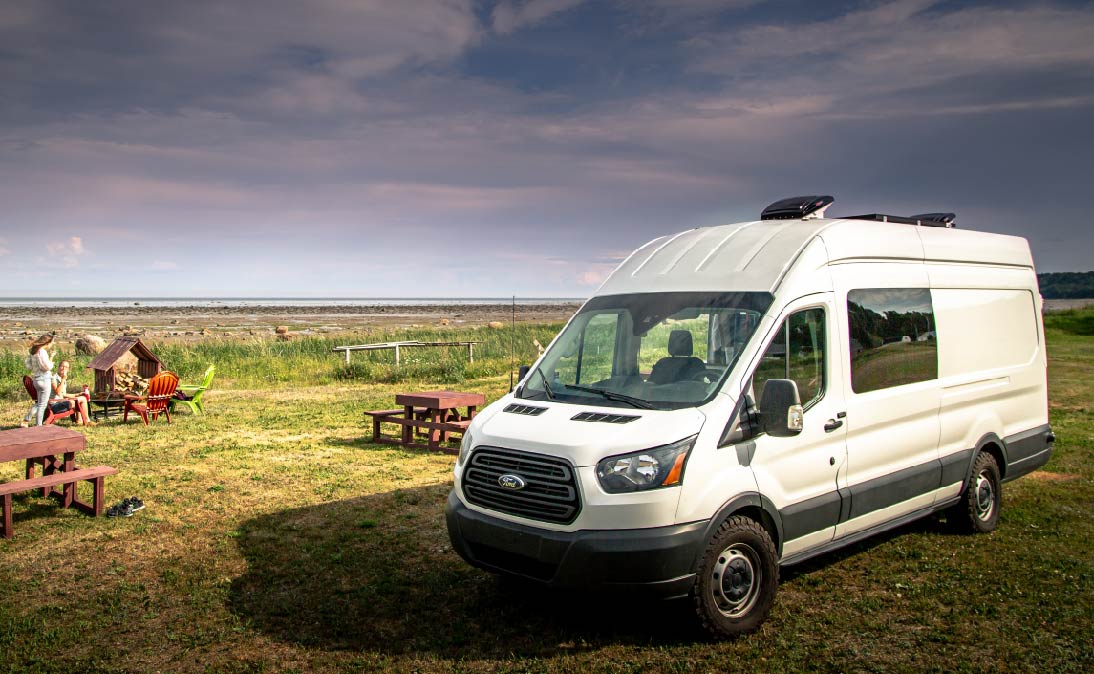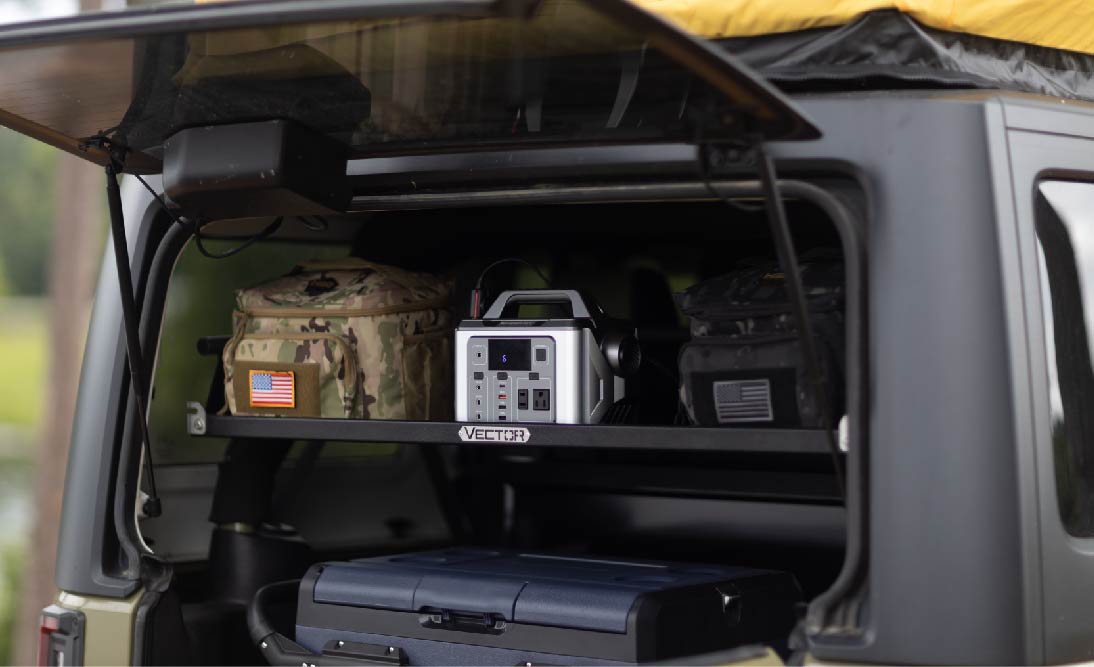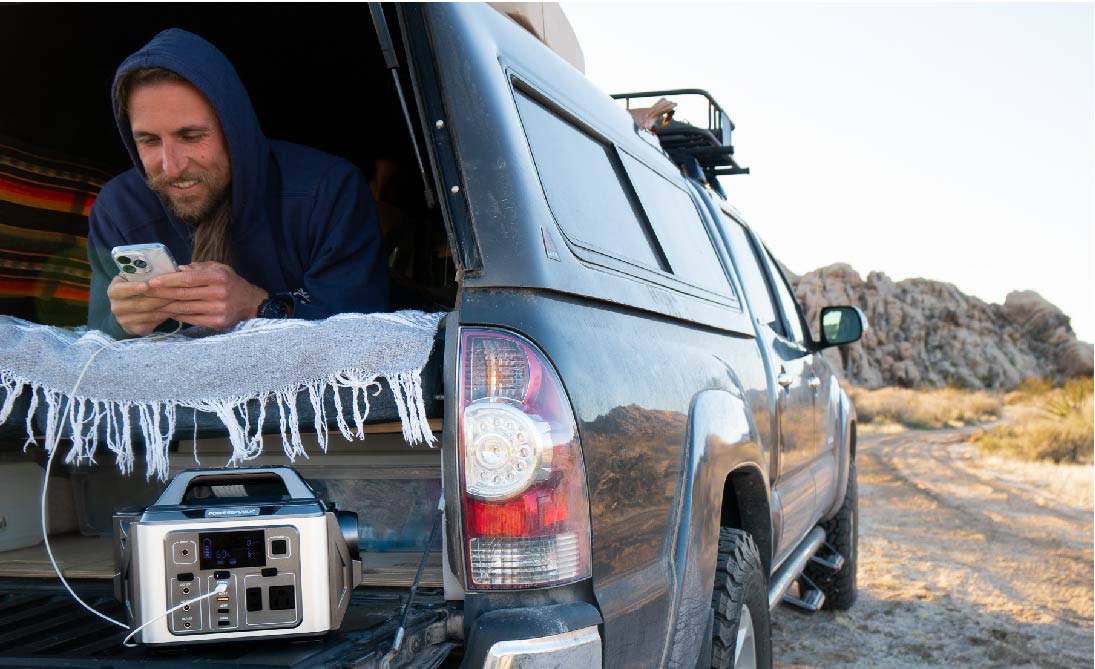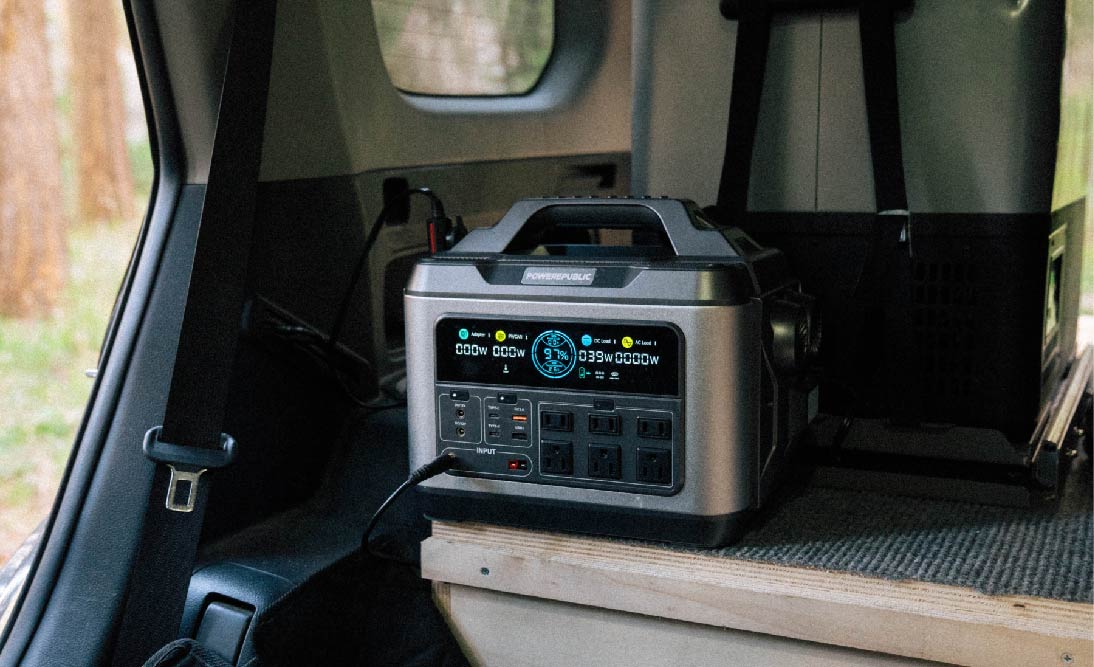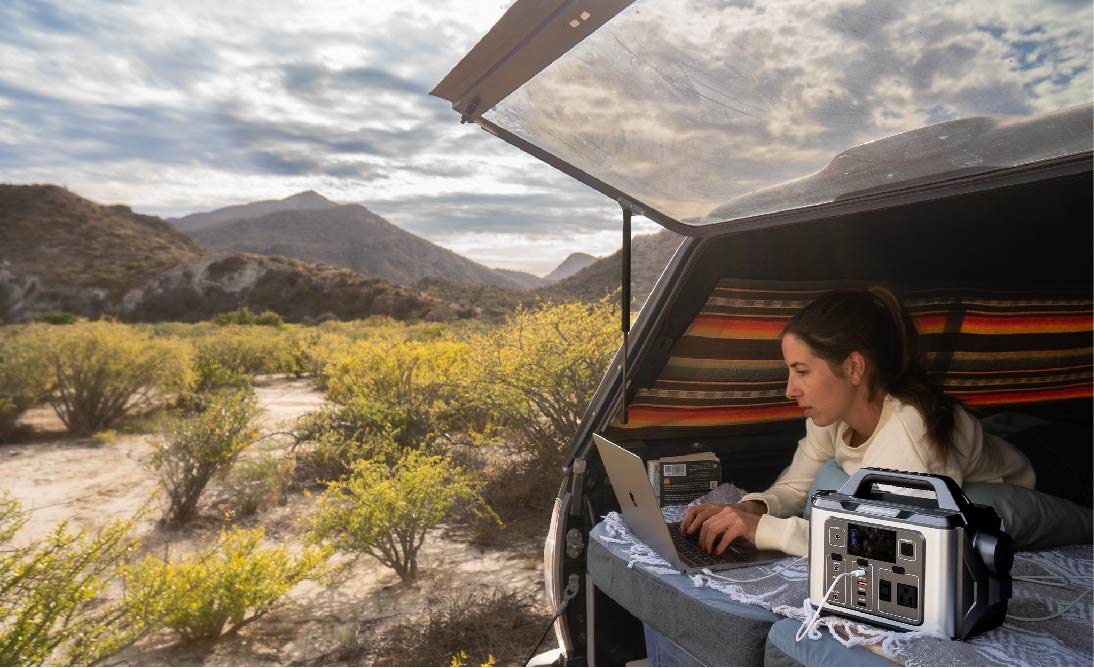Embarking on a camping adventure allows us to break free from modern life and reconnect with nature and ourselves. However, in an increasingly connected world, the need for power while camping has become more prevalent than ever. This is where portable power stations become very demanding. Offering a reliable portable, and convenient power source, these innovative devices have transformed and changed the way we experience the great outdoors. With them, power outages won’t be a problem while camping.
In this article, we will talk about the numerous benefits of using a portable power station for camping and how it can truly empower and enhance your adventures in nature.
Advantages Of Portable Power Stations For Camping
Portable power stations come with a lot of advantages for outdoor enthusiasts, here are some of them:
1. Convenience and Portability
-
Power On-Demand
Allowing you to access electricity whenever and wherever you need it so that you don’t have to rely on traditional power sources. Once charged, portable power stations are ready to supply power immediately for your devices and appliances such as cell phones, drones, laptops, cameras, etc. By simply plugging in your devices or appliances to the power station's outlets or other ports, you can now ease your mind and enjoy the constant power supply from the portable chargers.
-
Lightweight and Compact Design
Portable power stations are specifically designed to be lightweight and easy to carry around. They are often built with durable handles or have integrated wheels, making them convenient to transport from one location to another. It is very important. Whether you're hiking or camping at a remote campsite or moving your power station around your camp, the lightweight ensures that it won't be a burden to carry.
Moreover, the compact design of portable power stations allows them to take up little space, making them ideal for camping trips or situations where storage space is limited. They can easily fit into your car trunk, camping gear, or storage compartments without occupying excessive room. This compactness ensures that you can bring other essential items without sacrificing space.
With less than 10 pounds, the POWEREPUBLIC T306 portable power station would be a great choice for campers to charge their small devices on the go. So petite, so powerful.

2. Versatility and Flexibility
-
Multiple Power Outlets
Portable power stations offer various power outlets and ports to accommodate different devices. They typically include AC outlets, USB ports, DC outlets, and sometimes even specialized outlets like car sockets. This allows you to connect and power a wide range of devices simultaneously.
For example, the POWEREPUBLIC T1200 portable power station has 6 AC outlets, 2 Type C ports, 1 USB port, 1 QC3.0 port, 2 DC ports, 2 Anderson ports, and 1 car socket. With a total of 15 ports, you can pretty much charge all your essentials all at once. With 1200W power and 1110Wh battery capacity, T1200 can also charge larger items like blenders, TVs, coffee machines, pancake machines, and so forth.

-
Compatibility with Camping Gear
Portable power stations can deliver power at different voltages and wattages, depending on the specific outlets and ports. For example, AC outlets can provide 110-120V or 220-240V of alternating current (AC) power, while USB ports usually supply 5V of direct current (DC) power. This flexibility ensures compatibility with various devices and appliances.
Check the power output specifications of the portable power station and your devices. Ensure that it offers the necessary power output to run or charge your camping gear. Look for the power requirements (watts or amps) of your specific equipment, such as tents, lights, fans, heaters, or portable refrigerators, and compare them to the power station's capabilities.
3. Off-Grid Power Solutions
-
Remote Camping Locations
Portable power stations are designed to provide portable and convenient power sources in some camping locations where access to traditional power is limited or unavailable.
If you enjoy backpacking or camping in remote wilderness areas, a portable power station can be a game-changer. It allows you to power essential devices like GPS devices, satellite communicators, headlamps, etc. This ensures you have a reliable power source for knowing where you at to be safe.
Many national parks have designated campgrounds that offer limited or no electricity at all. Having a portable power station allows you to charge your LED lights, electronic devices, electric coolers, or portable fans.
Beach camping locations are another hot spot that often lacks electrical infrastructure. You can use portable chargers to power portable speakers, recharge your phone or camera batteries, run small fans for ventilation, or even power mini-fridges to keep your food and drinks cool.
When it comes to van life, a portable power station can offer additional flexibility and backup power. It allows you to power devices outside the vehicle. It can also be useful for boondocking, where you camp in remote areas without hookups.
-
Emergency Power Backup
If you engage in outdoor activities like camping, hiking, or road trips, having a portable power station as an emergency backup can provide peace of mind. It ensures you have power for lighting, charging devices, running emergency radios, keeping all your food fresh, or using medical equipment if needed.
In situations where there is a power outage or disruption, a portable power station can keep your essential devices, such as laptops, modems, or routers, powered for remote work and communication. This can be crucial for staying connected during emergencies or when working remotely outdoors.
4. Sustainable and Eco-Friendly
-
Reduce Carbon Footprint
Portable power stations can be charged by portable solar panels using renewable energy sources such as solar power. By harnessing clean and renewable energy from the sun, the carbon emissions associated with power generation are significantly reduced or eliminated. This shift away from fossil fuel-based electricity reduces greenhouse gas emissions and helps mitigate climate change.
Portable power stations, along with the devices and appliances they power, can be optimized for energy efficiency. Choosing energy-efficient devices and practicing smart power management helps minimize energy waste and reduces overall electricity consumption. By doing that, energy losses during transmission and distribution are minimized. This localized approach improves energy efficiency and reduces the overall carbon footprint.
5. Safety and Convenience Features
-
Battery Management System(BMS)

BMS stands for Battery Management System. It is an essential component found in many portable power stations, especially those equipped with lithium-ion batteries. The primary function of a BMS is to monitor and manage the performance and safety of the battery pack. Here are some key aspects of a BMS:
The 1st one is called Battery Monitoring. The BMS continuously and constantly monitors various parameters of the battery, including voltage, current, temperature, and state of charge. This information helps ensure optimal performance, prevent overcharging or over-discharging, and maintain the battery within safe operating limits.
The 2nd one is called Cell Balancing. In a multi-cell battery pack, the BMS ensures that the voltage of each cell remains balanced. Cell balancing helps prevent uneven charging or discharging, which reduces overall battery performance.
The 3rd one is called Overcharge and Over-Discharge Protection. The BMS prevents overcharging the battery by monitoring the voltage levels and cutting off the charging process when the battery reaches its maximum safe voltage. Similarly, it protects against over-discharging by disconnecting the load when the battery's voltage drops to a certain threshold to prolong battery life.
The 4th one is called Temperature Regulation. The BMS monitors the temperature of the battery cells to prevent overheating. If the battery temperature exceeds safe limits, the BMS can reduce the charging or discharging rate, activate cooling mechanisms, or even shut down the power station.
The 5th one is called Short Circuit Protection. The BMS detects and responds to short circuits within the battery pack or connected devices. It quickly interrupts the current flow and isolates the affected area to prevent damage and minimize safety hazards.
The 6th one is called Communication and Data Reporting. Many BMS systems include communication interfaces such as CAN bus or SMBus, allowing the power station to communicate with external devices or monitoring systems. This enables real-time monitoring of battery performance, diagnostics, and data reporting for battery health analysis.
All POWEREPUBLIC Portable Power Station has built-in BMS.
-
User-Friendly Controls and Displays
Portable power stations typically feature user-friendly controls and displays to provide easy operation and monitoring. Here are some common features you can expect to find.

Power Button - usually located on the front or top of the power station, allowing you to easily turn it on or off with a single press.
LCD or LED Display - Many portable power stations have a digital display panel that shows important information such as battery level, input/output wattage, remaining runtime, charging status, and various modes or settings.
Indicator Lights - LED indicator lights are often present to provide a quick visual reference of the power station's status, such as power on/off, charging, low battery, overload, or fault conditions.
Function Buttons - Additional buttons may be available to control specific functions or modes of the power station. For example, buttons to switch between AC power, DC power, or USB outputs, or control other built-in features.
USB Ports and DC Outputs - These ports may be color-coded or marked with specific symbols to indicate their respective power ratings.
Input Charging Port - A designated input port, often accompanied by a charging icon or label. Common charging methods include AC wall adapters, solar panels, or car adapters.
User Interface - This may include on-screen menus, prompts, or icons displayed on the LCD panel for easy navigation and configuration.
Audible Alarms - In some cases, portable power stations may include audible alarms or warning beeps to alert you of critical events or conditions such as low battery, overload, or system faults.
Conclusion
In conclusion, a portable power station is a game-changer for camping and outdoor adventures, empowering you to embrace the great outdoors while staying connected and enjoying modern conveniences. With its compact and portable design, a portable power station brings numerous benefits to your camping experience.
What’s more, portable power stations can serve as a reliable emergency backup power source during unexpected outages or as mobile charging stations on road trips. Its ability to harness renewable energy, such as solar power, allows you to reduce your carbon footprint and embrace sustainable camping practices.
Investing in a portable power station opens up a world of possibilities, providing freedom and flexibility to explore remote locations, extend your camping trips, and create lasting memories. It empowers you to stay connected, capture unforgettable moments, and enjoy the comforts of home even when you're far away from it.
So, empower your adventures with portable power stations and embark on unforgettable camping experiences, knowing that you have the reliable power you need to make the most of every moment in the great outdoors.
Explore POWEREPUBLIC Portable Power Stations!
